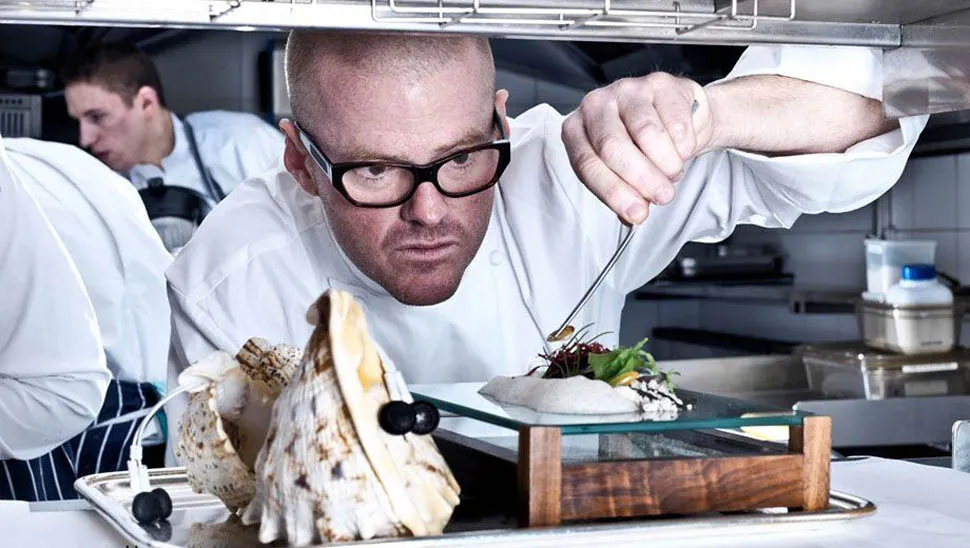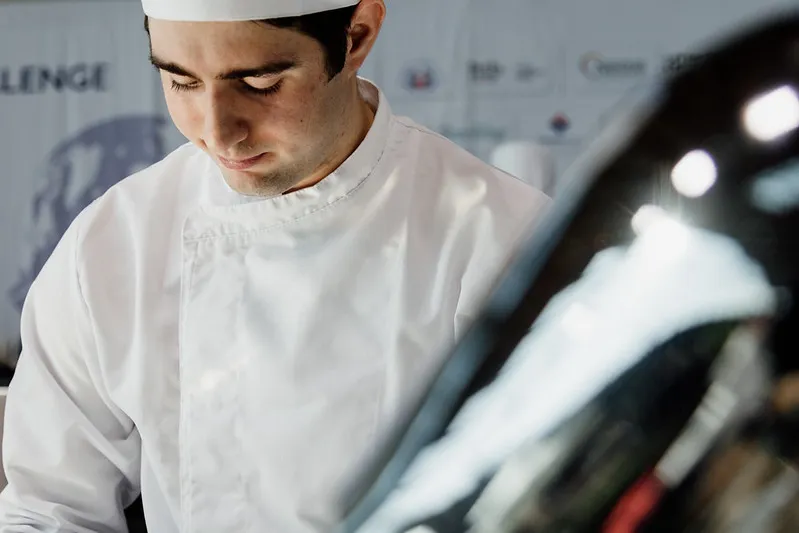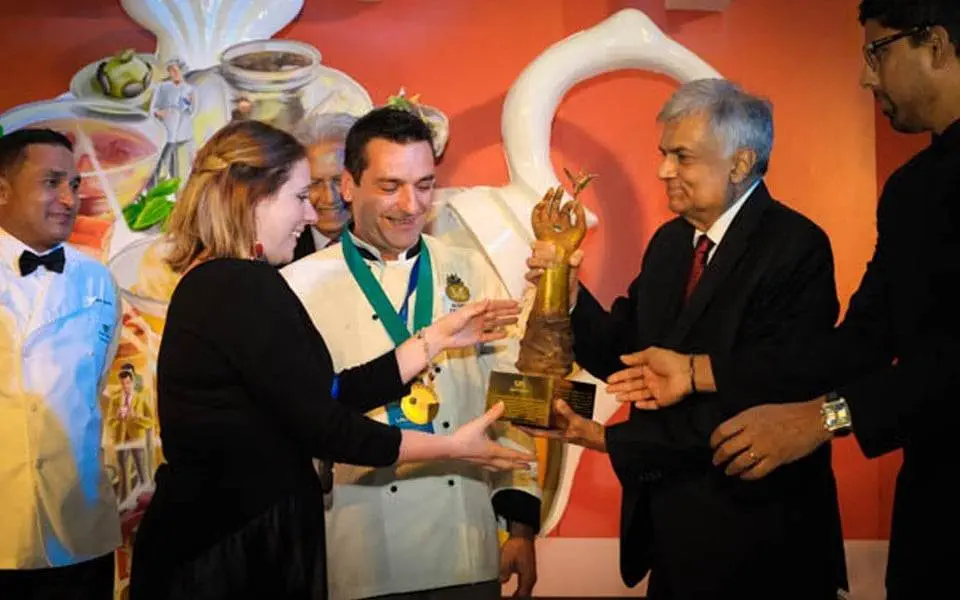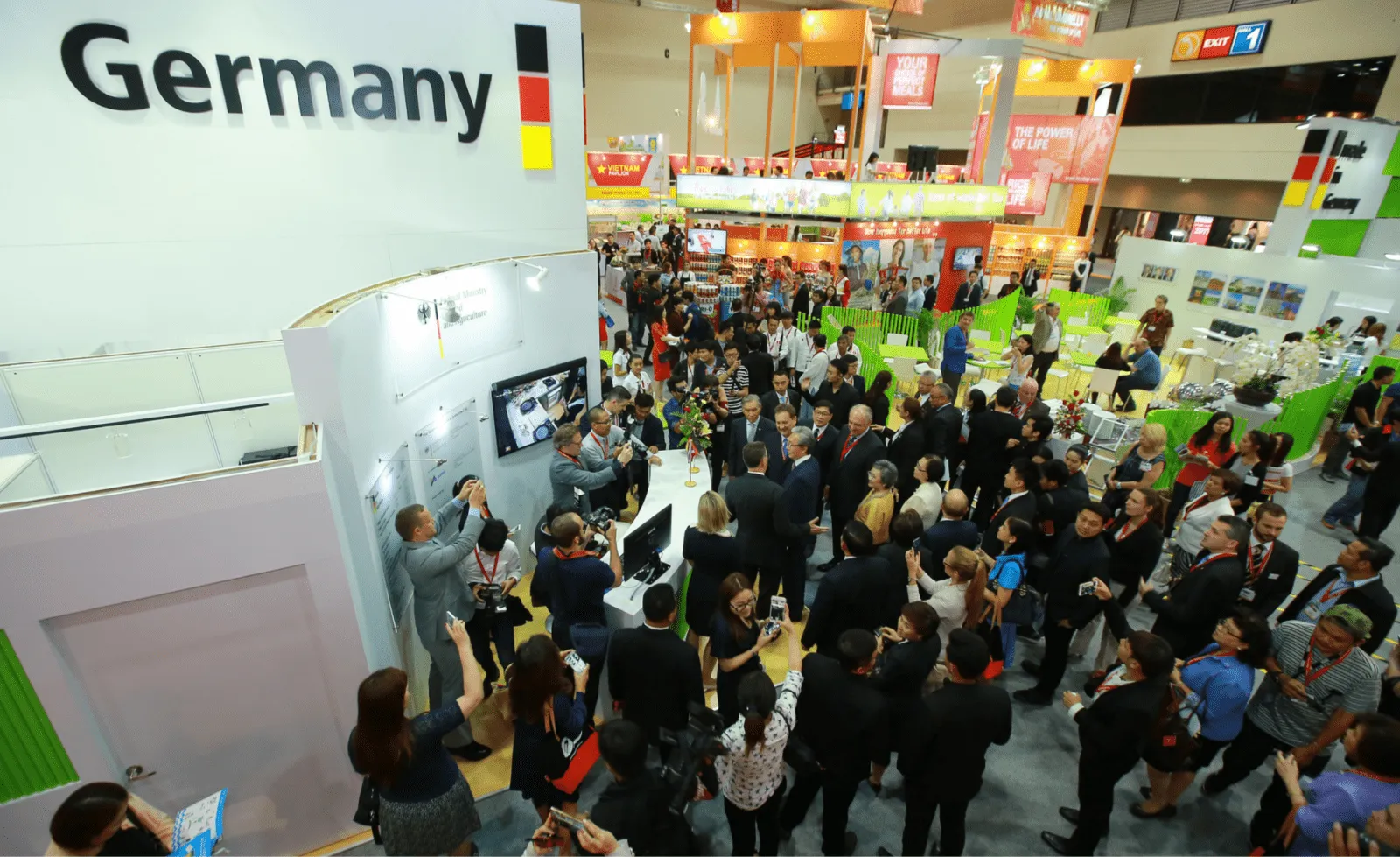Experiential dining is nothing new. It was even parodied on a recent episode of The Simpsons, which famously predicts the future. Still, immersive dining experiences are making a comeback in a big way, and data on younger generations provides some insight on why this is set to be an important trend to watch. With a new wave of consumers having grown up watching Chefs’ Table, what should chefs know about tapping into the value of the experiential dinner?
A Brief History of Immersive Dining
Curated, creative, and often downright scientific, high-concept experiential dining has arguably always been a part of haute cuisine. But putting a name to immersive menus involving all of the five senses found wider acceptance during the 2010s. Chefs started to think off-the-plate to manipulate the perception of flavor, set themselves apart, and experiment to tell their story.
The popularity of multi-sensory dining owes in large part to the emergence of the science of neuro-gastronomy, which has helped unravel the complex multi-sensory brain processes that create the range of flavors we experience when eating and drinking. According to neuroscientist Gordon M. Shepherd, our appreciation of what is in the mouth is created by the brain. Charles Spence, Professor of Experimental Psychology at the University of Oxford and author of Gastrophysics: The New Science of Eating, shares a similar view. “I think we all assume that taste comes from our tongues… In fact, all of your senses are involved. Everything from the color of the plate to the weight of the cutlery in your hands, from the background music to any ambient scent, as well as the lighting and even the softness of the chair you are sitting on.”

One well-known example from now a decade ago is Chef Heston Blumenthal’s (The Fat Duck) signature “Sound of the Sea” dish, served with an iPod playing ocean sounds tucked into conch shell.
Sure enough, recent research into ‘sonic seasoning’, the deliberate pairing of sound with taste, backs up how specific musical elements like pitch, tempo, and timbre can enhance or alter flavor perception.
In one study, participants reported food tasting sweeter or more bitter depending on the background sound, highlighting that auditory cues can meaningfully shape our sensory experience of eating, and how restaurants can use soundscapes to influence guest satisfaction. And it works from a business case, too—research on immersive dining has linked higher satisfaction and revisit intentions to well-executed multi-sensory experiences.
There has been a host of chefs who have brought their own unique flair to multi-sensory dining experiences; the list is long and you need only Google your curious idea to see who in the culinary world might have brought a similar concept to up-for-anything diners. But each of them, whether they made it onto Netflix, TikTok, or a consumer’s mental list of most memorable dinners, played with the idea that flavor also comes from flair.
Historically, high-concept experiences have often come with even higher price tags, and the exorbitant price points of dining at multi-sensory restaurants put them beyond the reach of most diners. But new technology and shifting consumer priorities have started to change this, pushing together the gap from both directions.
Data-Driven Design: Could tech make immersive dining experiences the new standard?
Technology is so much more embedded in our every day, or every moment, than ever before, and is constantly unlocking new ways to customize experiences and make data-informed decisions about the how and what people want when they go out to eat. But it’s also about the who, with generations of digital natives now changing the scene through their spending power.
Gen Z and Millennial diners are looking for personalized, interactive, and authentic content. Meanwhile, AI customization is opening doors for interactive menus. In places like Paul Pairet’s Ultraviolet in Shanghai, tech allows guests to influence the lighting, soundtrack, and even ambient scent of their environment, all tailored to their mood and preferences.
Virtual reality headsets, projection mapping, scent design—it’s all becoming more accessible to restaurants looking for an edge, and is matched by an audience with an appetite. Survey data shows that for Gen Z, 47% use AR/VR, and over half are open to paying for immersive content. Studies also show that immersive tech like AR/VR keeps them coming back, extending consumer engagement before, during, and after a meal.
Viral-worthy theatrics and video ops, interactive environments, FOMO-inducing TikTok storytelling—it all adds up to a shift towards immersive experiences and details that market to all the senses.
But immersive dining isn’t just techy; it uses all the tools at a chef’s disposal to connect diners to the dish. Successful experiential dining concepts are also narrative-driven, with storytelling as an integral part of menu strategy. Chefs want to share place and purpose through their food, and storytelling menus also build brand loyalty. A customer who feels connected to the experience, through science and story, is more likely to return, share, and become an ambassador of sorts in a highly competitive market.
Gen Z and Millennials are looking for story and connection. They consistently spend more on experiences than on material purchases. A report by Eventbrite found that 78 % of Millennials prioritize experiences over physical possessions. In that same report, 50% of respondents say that even with the same menu, they’d be willing to pay more for a meal at a pop-up event with a chef interaction than for a meal at a regular restaurant ($58 dollars more per person on average). Gen Z diners are more willing to dish out extra for novel dining experiences.
In a study by Technomic, 72% of diners expressed a desire for more experiential dining options, such as chef’s tables, themed dining events, and interactive culinary experiences. Yelp data from early 2025 shows searches for immersive concepts rising sharply. Immersive dining is a growing consumer demand, and chefs have an opportunity to benefit from this renewed interest.

Easy Ways to Incorporate Immersive Dining Ideas
You don’t need augmented reality pairing or to rebrand your restaurant as performance art in order to learn some tips and tricks from this trend. Immersive experiences can be scaled to suit your interests and resources.
Here are a few ways to incorporate key learnings into the way you operate:
- Sonic pairings: Curate background soundscapes or playlists that speak to the whole dining experience to elevate your food.
- Tableside training: Train staff to share the origins, emotions, or inspirations behind each dish.
- Seasonal storytelling: Create thematic menus that evolve with the seasons or cultural moments like holidays and festivals, keeping diners curious and engaged.
- Offer personalization: 75% of Gen Z diners customize their orders. Provide menu options that incorporate personalization and interactivity, like table-side pours.
- Brand connection: Showcase chef stories, sustainable sourcing, and the cultural heritage that inspires your menu. Bonus points if you incorporate QR-activated videos or other easy tech and social media integrations.
- Get creative to generate value: How can you do something unique? Get creative with ways to deliver experiences and increase revenue, such as hosting events, organizing engaging pop-ups, or organizing entertainment during service.
Trend Takeaways
By the looks of it, the future of dining is immersive, interactive, and intentional. Young, market-shaping eaters seek more than just great food, and memorable experiences drive loyalty. Chefs have the opportunity to get creative on and off the plate, using technology, storytelling, and sensory design to connect with diners.
Thoughtful data-driven design can boost guest satisfaction and repeat visits. As diners increasingly choose something interactive for their nights out, experiential menus like chef’s tables, personalization options, and tech-savvy menus can justify premium pricing.
The data is clear. Immersive dining has started to shift from niche to mainstream, with Gen Z and Millennials hungry for story, entertainment, and engagement. Investing in the experience economy can help you stay ahead of the curve.














